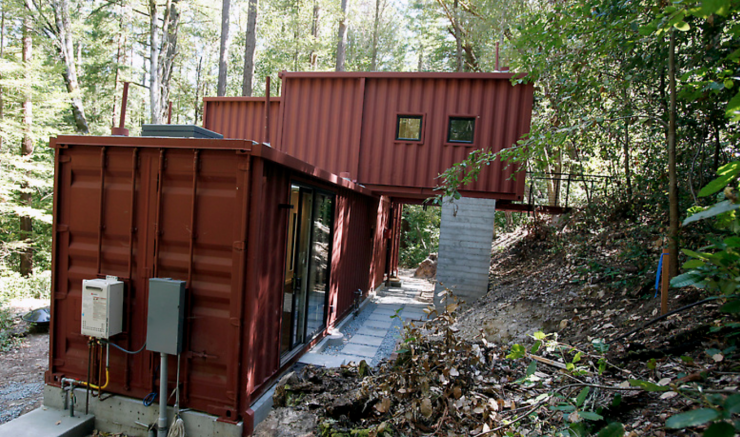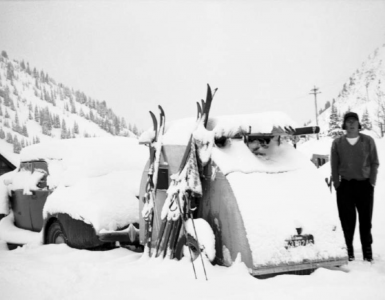By Warren Miller
 A college student will spend four years living with a roommate in a dorm room that only measures about 450 square feet. Yet, when they graduate from college and move to a ski resort, they expect to be able to rent someone’s three-bedroom condo for next to nothing. Unfortunately, it doesn’t quite work that way.
A college student will spend four years living with a roommate in a dorm room that only measures about 450 square feet. Yet, when they graduate from college and move to a ski resort, they expect to be able to rent someone’s three-bedroom condo for next to nothing. Unfortunately, it doesn’t quite work that way.
I’ve been involved in or around the employee housing problem at ski resorts since 1946 when I slept in the parking lot in Sun Valley, Idaho for the entire winter. Even back then, most resorts were reluctant to build any accommodations for their help. If they did provide housing, it was usually substandard. Resorts seem to rely on the fact that their employees’ desire to ski all winter overpowers their desire for quality living quarters.
While management has been ignoring the employee housing problem, the land around their resorts has become more valuable with each passing year. Until now, that land is usually located many miles down the road where employees can find a place where they can afford to live.
There is a solution on the horizon, but no one wants to do it: temporary housing in the form of shipping containers. Before you scoff at the idea, let me give you a few statistics.
These containers are forty feet long and eight feet wide. A commercial company ingeniously converts them to housing by cutting out windows and doors and combining numerous containers in order to make a larger living area. They can deliver a one-bedroom apartment with a good sized living room, a full kitchen, a bathroom that includes a shower, toilet and wash basin, as well as a washer and dryer for only $18,000 plus a dollar a mile to deliver it to your site. This is less than half the price of a similar sized mobile home.
Imagine the metal exterior walls of the container covered in shakes, shingles, or another wood style of your choice. Add a peaked roof and the containers are insulated with foam that works well down to forty below zero. Legally, your employee housing or your vacation home is considered temporary housing. This can be very beneficial, so that as the resort town grows, the containers can easily be picked up, put on a truck and moved a little farther out of town.
At ski resorts, an employee bed usually rents for about $500 a month. Financing an $18,000 container-home costs about $200 a month. With two renters sleeping in wide bunk beds, you have a gross income of $1,000 a month. By my arithmetic, it seems to be a no-brainer as a money-making scheme while solving employee housing problems at the same time. Unfortunately, whenever I mention containers, people imagine a stack of them five or six high that they see rusting around an ocean port somewhere.
Instead, imagine newer containers covered with nice cedar shakes, good looking windows and pitched roofs, stacked two high down the side of a canyon somewhere near a ski resort where no one has ever wanted to build a house. Pick the cheapest land within ten miles of the resort and you would have an instant village for your employees and you could probably get better employees as a result.
The inside of the containers with their stainless steel walls that are covered with good wall coverings can be crafted with a variety of interior décor packages. Why not? The simple reason is that nobody wants employees living in their backyard. Yet, those very people who own resort homes want five-star services. (By the way, where do the police officer, firefighter, nurse and school teacher afford to live while they are making the resort run in the manner that you want it to?)
This is the ultimate recycling project. Apparently, there are about a million of these shipping containers just clogging our seaports once they have fulfilled their initial purpose. By converting them to housing, we are solving a waste problem while creating low-cost housing. The company that converts them foresees using them as homeless shelters or as emergency shelters after natural disasters. Well, why not use them to solve the affordable housing dilemma in resorts also?
Once again, I would like to emphasize that nothing is being done anywhere that I know of to help make this problem easier for the employees. I don’t think any of the resorts in Colorado, Utah, Montana, Idaho, or California or even on our small island up here near the Canadian border are truly doing anything to solve this problem. There is just nowhere for the employees to afford to live.
Resorts are supposed to be great places with good service. It’s hard to provide good service when you are exhausted from your long days combined with your long commute. Just think, on your next vacation, you could be served by employees that have had to commute 60 miles or more from substandard housing just so they can serve you your food before they repeat that long commute home.
Maybe a container-village nearby would solve the problem and improve service. Of course, first someone has to volunteer their backyard.














